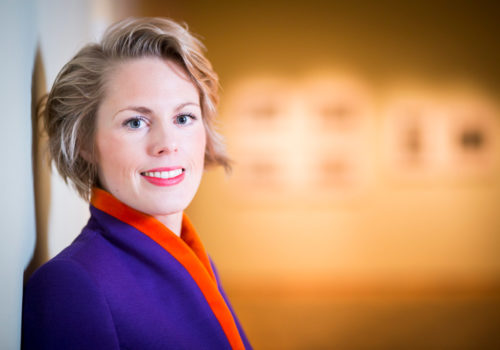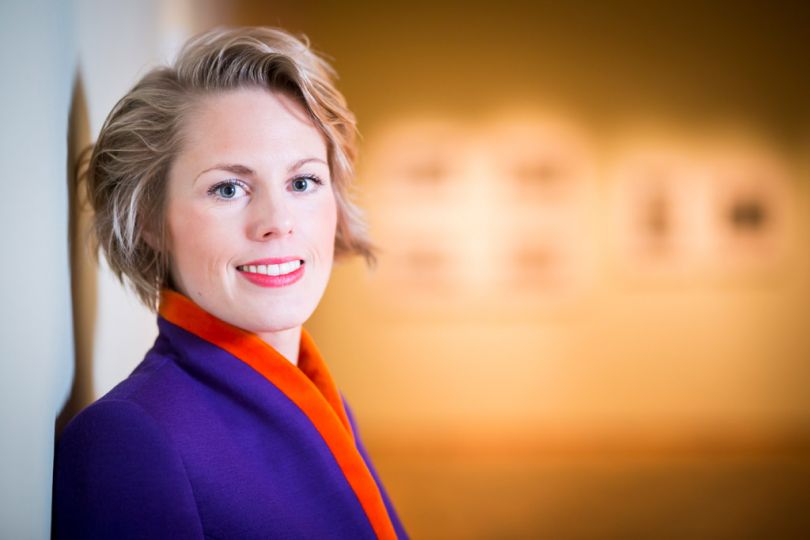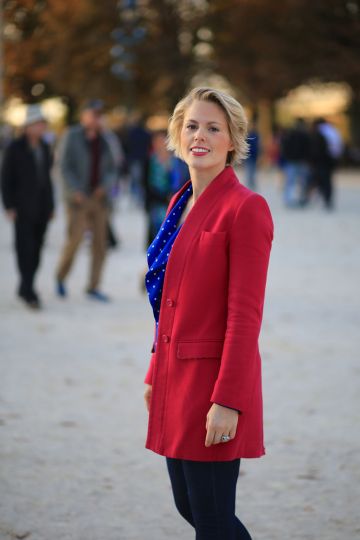Tatyana Franck, who, at a mere 30, steers the destiny of the future Musée de l’Elysée, located at the heart of a new museum campus near the Lausanne train station, received us with welcoming simplicity. There is no doubt that her organizational energy is going to do wonders in what has become a very competitive landscape, where the Vaud institution is going to face many challenges following the departure of Sam Stourdzé.
Part I: A profile, an overview, and a roadmap
What was your first shock in photography?
One of my first shocks came from a photograph of a Bangkok prostitute by Nan Goldin which I discovered when I was 17. It was a real revelation. When I saw this photo, which haunted me for months, I knew right then and there that I was going to work in the world of images.
How did your background fit the needs of the future Musée de l’Elysée in Lausanne’s museum campus which will also house the Musée cantonal des Beaux-Arts (MCB-A) and the Musée de design et d’arts appliqués contemporains (MUDAC)?
I have a rather generalist background and a complementary vision combining modern and contemporary art and photography. Among others, I worked at the Archives of the Claude Picasso collection, which I headed for eight years. Claude Picasso put his trust in me despite my young age. I was in charge of evaluating the photography collection, as well as painting, sculpture, and design. I also developed personal projects, such as curating the David Douglas Duncan exhibition presented at the Roubaix Swimming Pool and reprised in Geneva.
How do you view your first year in your post?
Extremely positively. I started on March 2, 2015, which was a really good sign because on March 2–3 we discovered the names of the 149 candidate architects selected to draft proposals for our future museum as well as the museum of contemporary design and applied arts. My role consists in running the museum, charting a new direction, and supervising the construction of a future museum of photography, which is an extremely ambitious project. A year later, the Portuguese architect firm Aires Mateus won the architectural design competition, and we are in the process of closely collaborating with them to optimize the spaces to match our ambitions. We have presented them with contract specifications outlining a refined vision in view of doubling our exhibition surface and tripling our reserves. Our long-term goal is to become a real center of expertise in the field of photography research and conservation: we have earmarked a large area for conservation / restoration (190 sq. m) capable of accommodating foreign researchers and students at the museum. With this goal in mind, considerable work is also being done in the museum collections.
How is the campus going to be divided among the three institutions: the Musée de l’Elysée, the Musée Cantonal des Beaux Art, and the museum of design? Isn’t there a risk of losing your distinctiveness?
The strong point of this project is that each institution maintains its own identity. The spaces are clearly demarcated. The MCB-A will be in one building and the MUDAC and the Musée de l’Elysée in another, each with a floor dedicated to exhibitions and a majestic shared space. We will occupy the beautiful atrium, with its 1,500 m2 surface area that is completely flexible: it will be subdivided between temporary exhibitions, the presentation of the featured collections, and the new media space (200 sq. m). All these spaces will be adaptable depending on the needs of the moment. Finally, a cultural mediation space is planned to welcome families and other audiences, namely in view of its proximity to the Lausanne train station. My watchword is accessibility. Although at present the museum is not accessible to handicapped audiences, we have launched a program called the “blind project” for the visually impaired, offering raised relief versions of images in our collection. We will also be the first museum to make those thirty images available online for individuals and institutions around the world to download and print in 3D.
The second part of interview will be published tomorrow, Tuesday April 12th.
INFORMATION
Musée de l’Elysée
Avenue de l’Elysée 18
1006 Lausanne
Switzerland
http://www.elysee.ch


















